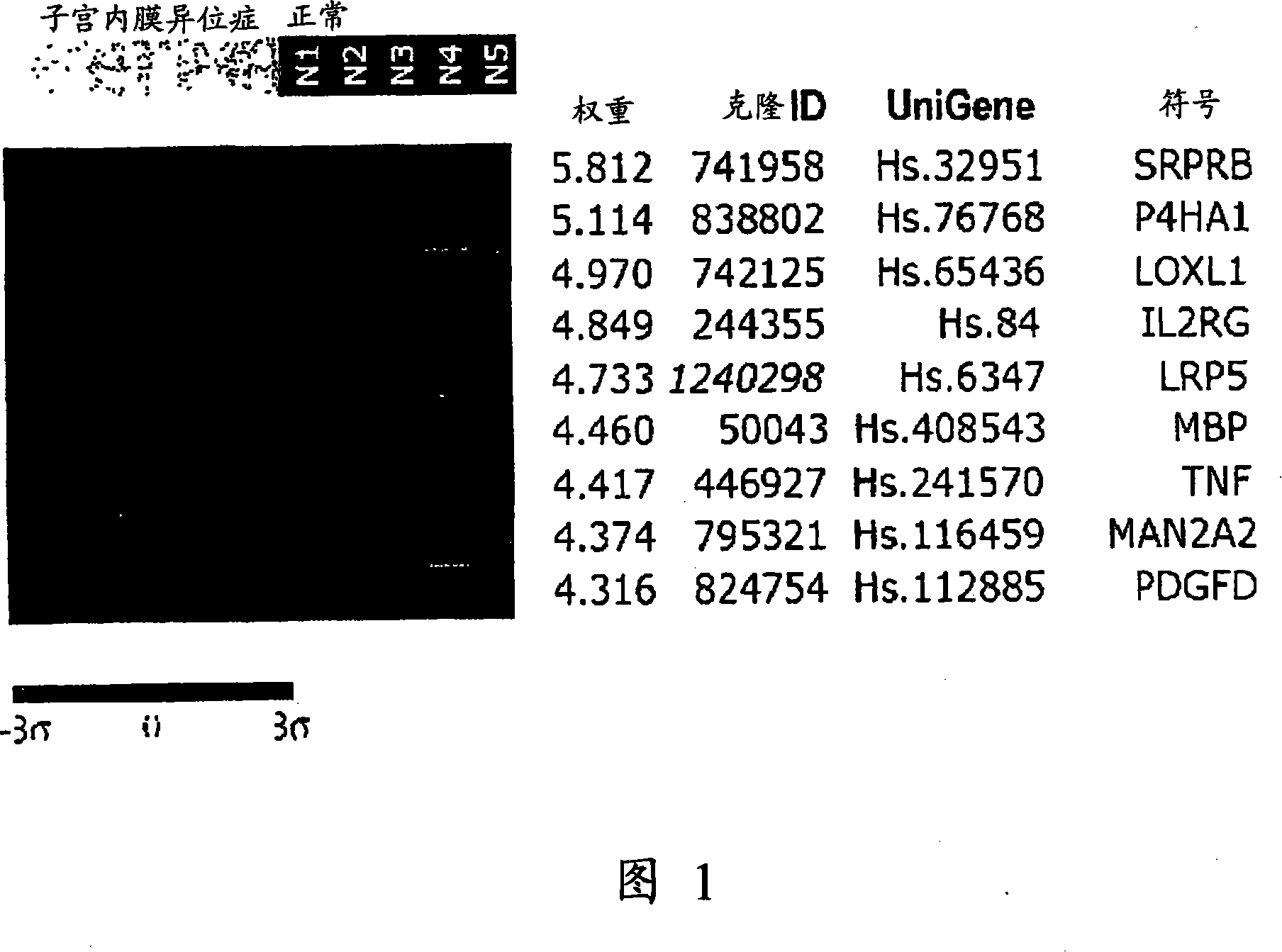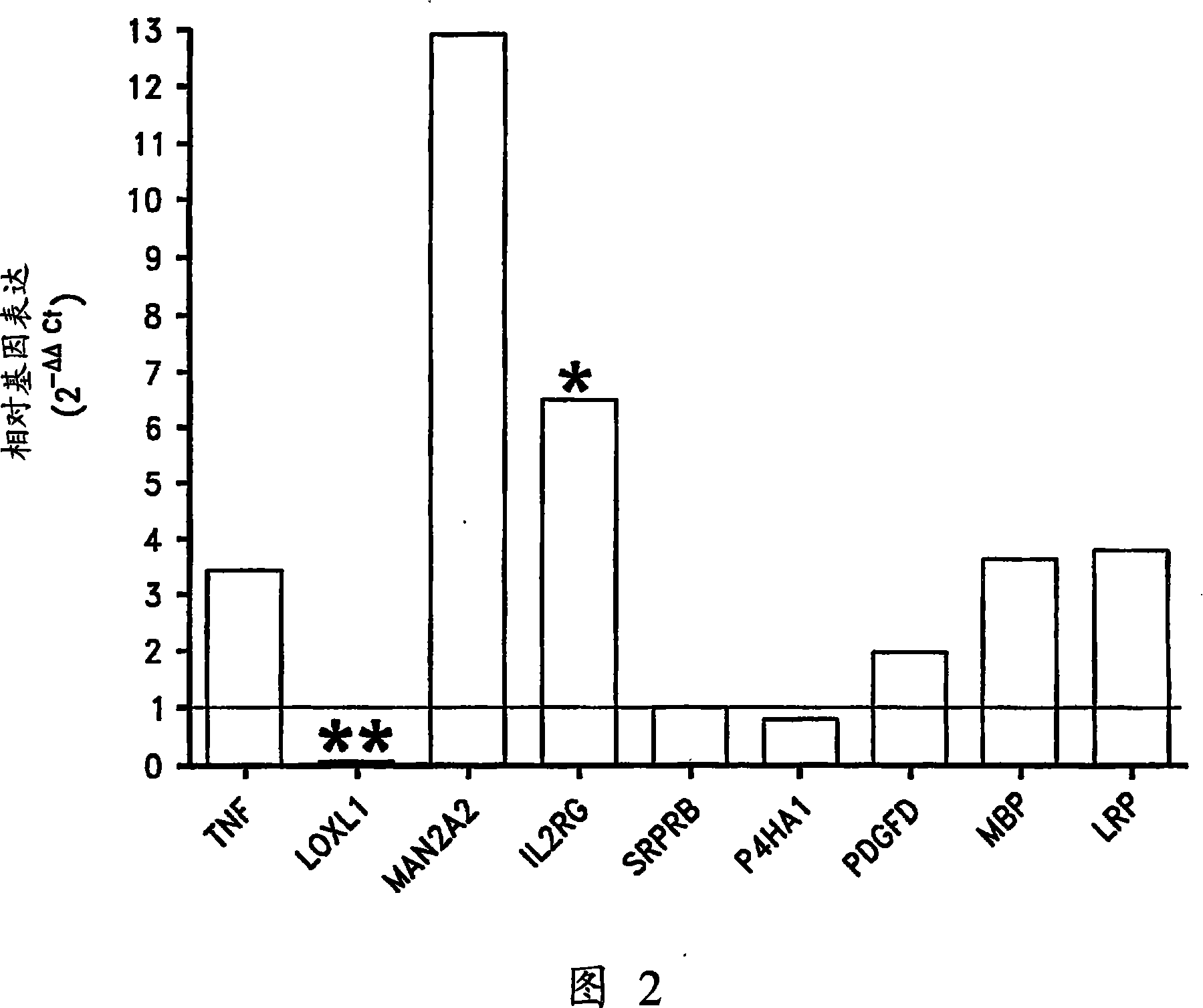Identification of molecular diagnostic markers for endometriosis in blood lymphocytes
A technology for endometriosis and endometriosis, applied in the direction of microbial determination/testing, drug combination, biochemical equipment and methods, etc., can solve problems such as incurable and no specific laboratory tests
- Summary
- Abstract
- Description
- Claims
- Application Information
AI Technical Summary
Problems solved by technology
Method used
Image
Examples
Embodiment 1
[0100] research population
[0101] Study individuals (patients and controls) were recruited through referrals from partner obstetrics and gynecology clinics operating throughout Puerto Rico. The patient population studied included premenopausal women diagnosed with endometriosis during surgery by a specialist in obstetrics and gynecology, and included patients of all disease stages: severe (11), moderate (6), mild (3 ), min(1). Patient samples for microarray (N=6; age range 32-39 years; mean 35.5 years) and for real-time RT-PCR confirmation (N=15; age range 26-39 years; mean 31.2 years) are randomly selected from our nucleic acid library. Thirteen of 21 patients (62%) were not receiving any medication at the time the samples were taken. Those receiving medical treatment took GnRH agonists (6), oral contraceptives (1) and testosterone (1). Control groups (N=4 for microarray; N=15 for RT-PCR) were women who underwent laparoscopy or laparotomy for an unrelated gynecologic st...
Embodiment 2
[0108]We completed the analysis of data from 14 additional patients. We included a scatterplot of the raw data (group 1) to better represent individual variation in these markers (Fig. 3). Importantly, the scatter plot shows that low expression levels of LOXL1 are present in all patients tested so far.
[0109] Likewise, we included additional data from another subgroup of 14 patients (group 2), which confirmed the original findings. The figure below gives a summary of the results for the second group of patients studied. Figure 4 includes scatterplots showing the individual variation of each gene in Group 2. Figure 5 presents the mean fold expression results for patients in Group 1 (upper panel) and Group 2 (lower panel), while Figure 6 shows a comparison of the results for the two groups. Figure 7 graphs the data from the 39 patients tested to date.
PUM
 Login to View More
Login to View More Abstract
Description
Claims
Application Information
 Login to View More
Login to View More - R&D
- Intellectual Property
- Life Sciences
- Materials
- Tech Scout
- Unparalleled Data Quality
- Higher Quality Content
- 60% Fewer Hallucinations
Browse by: Latest US Patents, China's latest patents, Technical Efficacy Thesaurus, Application Domain, Technology Topic, Popular Technical Reports.
© 2025 PatSnap. All rights reserved.Legal|Privacy policy|Modern Slavery Act Transparency Statement|Sitemap|About US| Contact US: help@patsnap.com



